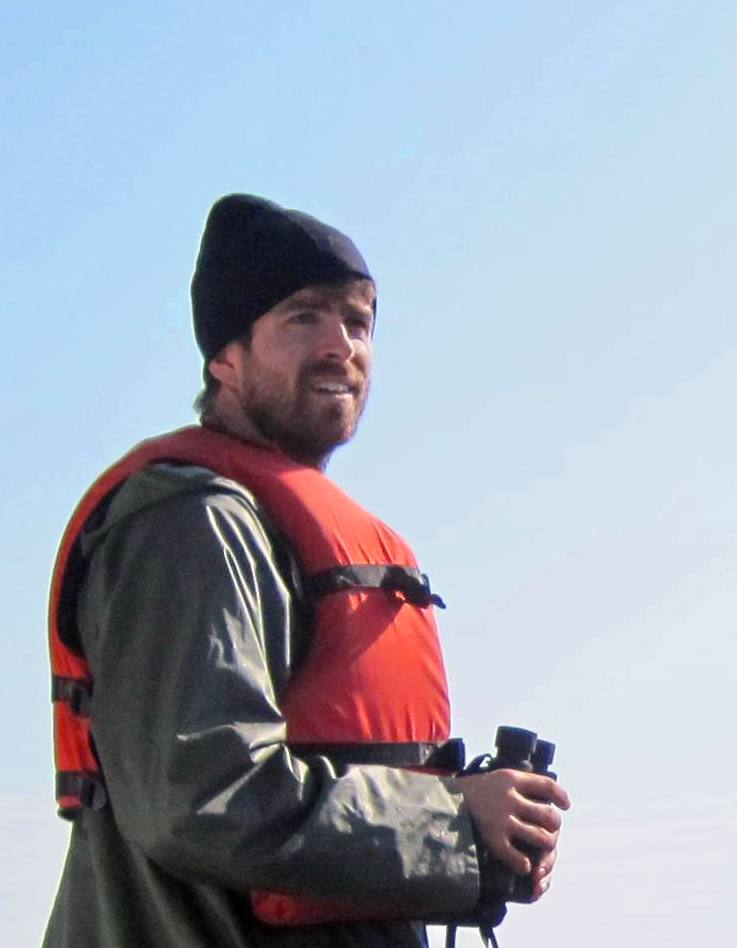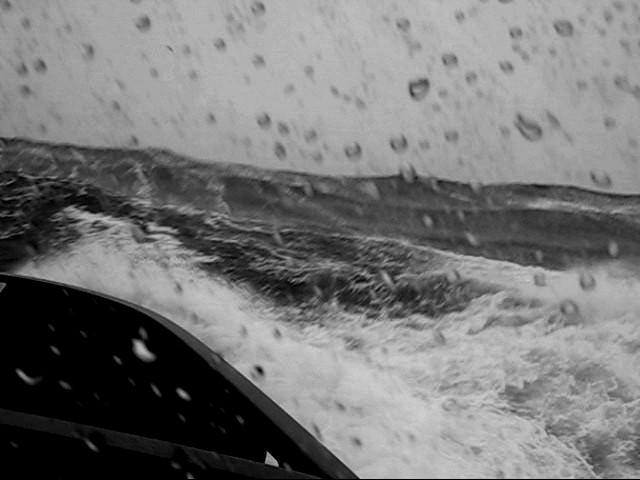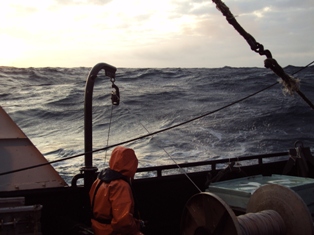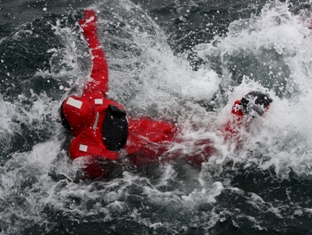
by Nate Jones, Vertebrate Ecology Lab
(still in the Bering Sea) … Of course the bad weather I’ve been writing about was nothing compared to what happens on the Bering during the months of February or March, and the Gold Rush fishes regularly during that time of year, so I had complete faith in the seaworthiness of the ship and the judgment and skill of the crew. I took comfort in that thought, and stumbled down to my bunk for what became a grueling 72 hours of bumps, rolls, and queasy stomachs. During this stormy time the crew exchanged watches at the helm, keeping the ship pointed into the fury.

We all hoped for the best, but by the time the seas had calmed to (a more manageable?) 8-10’, the hungry ocean had damaged and ripped off much of our scientific equipment, snapping several ¼” steel bolts and ripping welds clean apart!
The Gold Rush itself weathered this storm in fine shape (wish we could say the same of our scientific equipment!), and there were no major injuries to anyone on board. It really was quite a minor event in the context of the Bering Sea; just another blowy, bumpy day or two out on the water.

But, it impressed me and I couldn’t help contemplating darker scenarios – what happens when there is a true emergency? What if someone had been swept overboard, or, worse yet, what if the ship itself had been damaged or taken on water and started to go down? Such things do happen, although not as frequently now as they have in the past (coast guard regulations and improvements in technology and crew training have contributed to much increased safety).
In my next post I’ll put up some images from training exercises that are routinely undertaken to help prepare crew and passengers (scientists) for emergencies at sea…


